Updated April 11 with some extra information regarding cycle tracks (scroll down)
The Town of Chapel Hill has secured some funding to design and construct a protected bike infrastructure on Cameron Ave from Merritt Mill to North Columbia Street. We actually petitioned the town for this in 2023 and wrote about it at the time.
We are beyond excited to see this happening. West Cameron has been a pothole laden mine field for years and it only got worse as the street was torn up for the OWASA waterline refits that were recently completed. The street is slated to get repaved anyway, so the town proactively prepared some possible designs. To say it is a bit bumpy to both bikes and cars is an understatement.
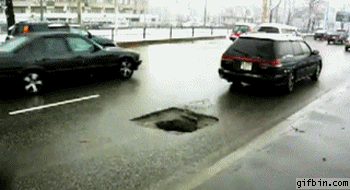
I am not going to share my pick, but mainly guide you through the alternatives and some considerations in choosing your favorite. First, the details:
- Project website: https://engage.chapelhillnc.gov/west-cameron-avenue-bike-improvements
- Public meeting: Thursday April 10, 6-8 PM at the Chapel Hill Town Hall
- Survey available: Visit the project website, and after making some considerations, please take the survey.
- Construction is tentatively slated to begin in the summer of 2026
Some things to consider, whether you ride a bike or not on Cameron (bike friendly road designs are safer for cars too)
- The changes will make the car lanes narrower. Studies have shown that narrower streets discourage speeding.
- Narrower streets are easier for pedestrians to cross.
- Driveways and intersections. When you put a two way cycletrack on a street, and there are cross streets, designers have to be especially intentional in the design. Further, a cyclist has to consider the common behavior of a right turning motorist only looking to their left when crossing over lanes. On a two way cycletrack , bikes are possibly coming from either direction and many drivers will not see bikes arriving from the right.
- There is POTENTIALLY a roundabout included in the design (more on that later). We are seeing more and more of them in new street profiles. This is a popular intersection for cars, especially certain times a day. There is a steady flow of bikes that come through this intersection from the Libba Cotten Bikeway. I personally have to navigate through this intersection nearly every day and sometimes more than once a day.
So let me get into the proposed alternatives and also opportunities for you to take a deep look and talk to town staff. The first two alternatives suggest a 2 way cycletrack. The primary difference being they are on either side of the street. East bound or west bound. Some thoughts when considering either is which direction you often find yourself riding on Cameron and where you are going at either end. Of course, most of us probably use it in both directions, but as I type this, I realize that the predominate direction I find myself riding Cameron is East (towards campus). Also consider the cross streets and driveways. As I mentioned before, people driving cars do not always look in both directions when pulling out (or into a side street for that matter)
Update: April 11 – I received some feedback from a well known scholar of of transportation and planning, who provided these comments regarding cycle tracks
The research and guidance (mostly from outside the US) is pretty clear on this: two-way and contra-flow cycle tracks are recommended only in rare circumstances, when no other solutions will work.
They should only be used in situations in which all side-street and driveway conflicts can be mitigated. The minimum level of mitigation for driveways is raising the cycle track to sidewalk level; for side streets is a traffic signal (with right on red not permitted).
The other challenge arises when the cycle track ends (or needs to be exited) and users find themselves trying to navigate car traffic from the wrong side of the road.
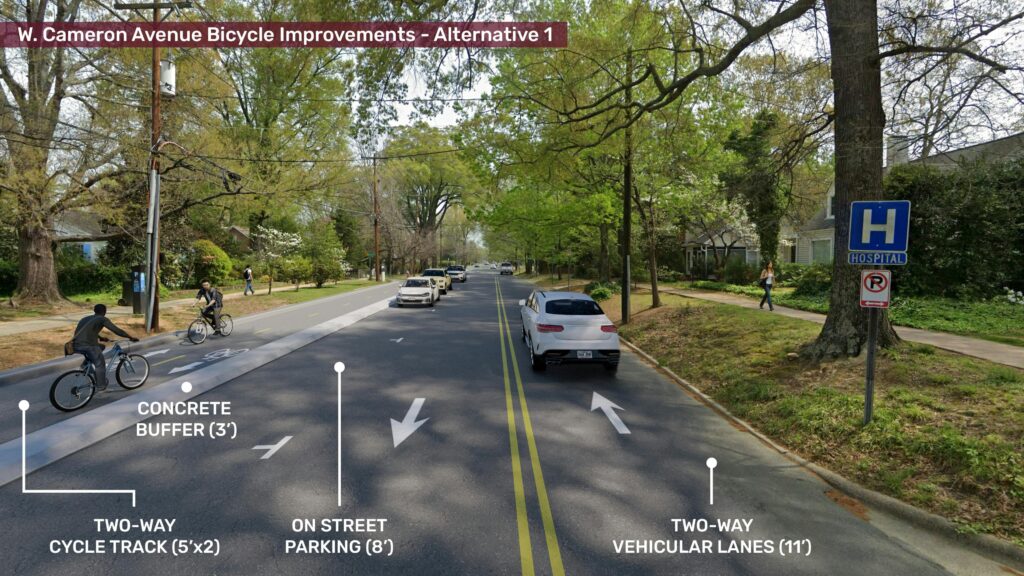
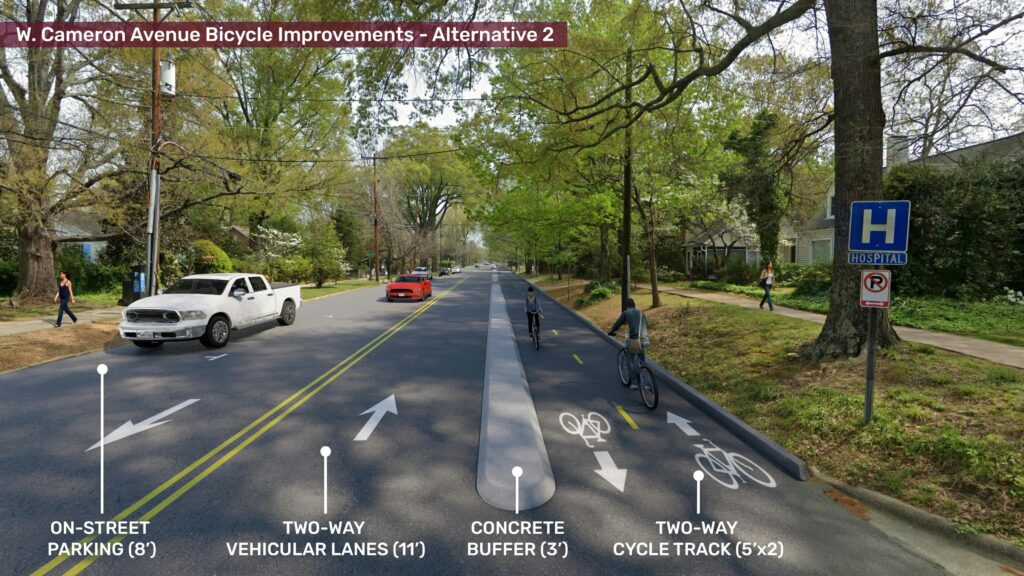
Alternative 3: This Solution puts a separate lane on both sides of Cameron. This creates equal levels of annoyance for drivers as they have to negotiate the cuts in the separators as they make turning maneuvers. Keep in mind, car people, that what makes driving slightly more challenging also makes the street safer as it gets everyone to slow down (including other cars). This is a more traditional solution and if you want some thoughts on other considerations I urge you to attend the public meeting next week (details at the top).
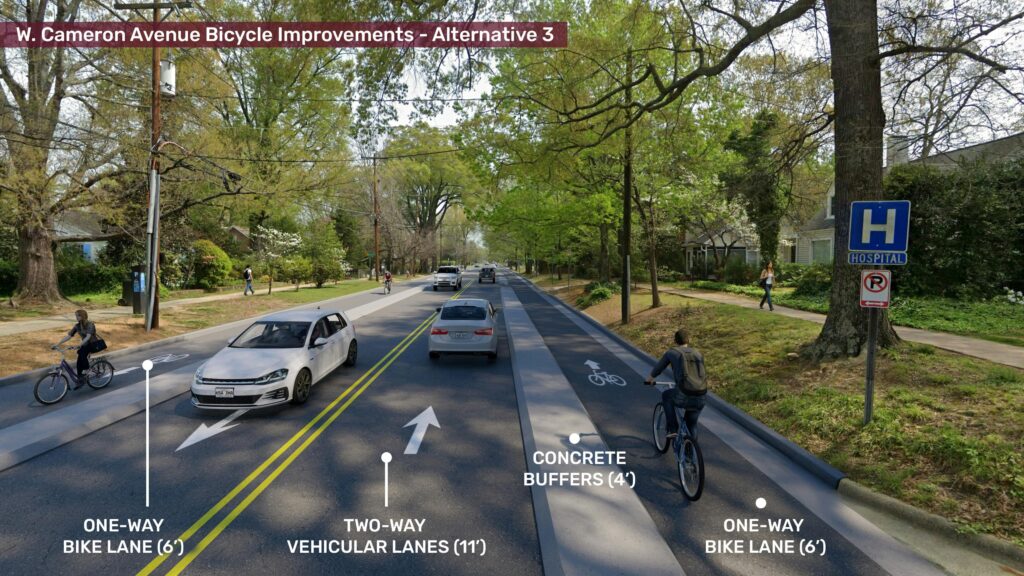
The project website has detailed drawings of the alternatives that are better than just these pictures. One of the significant changes this project has that will be new is the incorporation of bicycle specific signaling. I have encountered these for decades in European cities, and this will be the first? In North Carolina. These will create timing cycles specifically for bikes, so promises to make the entire facility safer.

Almost an afterthought in the project page is the inclusion of a roundabout. While the alternative drawings do not include this feature, it is notable because the town is evaluating this as part of the entire project. There will be further technical assessments (such as traffic counts and measurements of turning traffic) that will be performed to see if the intersection warrants a roundabout. If that is determined to be possible, the drawings will be updated to incorporate this feature, and the town planning staff already have ideas on how to incorporate the roundabout into the plans for the bike lanes that will change depending on which alternative is ultimately chosen.
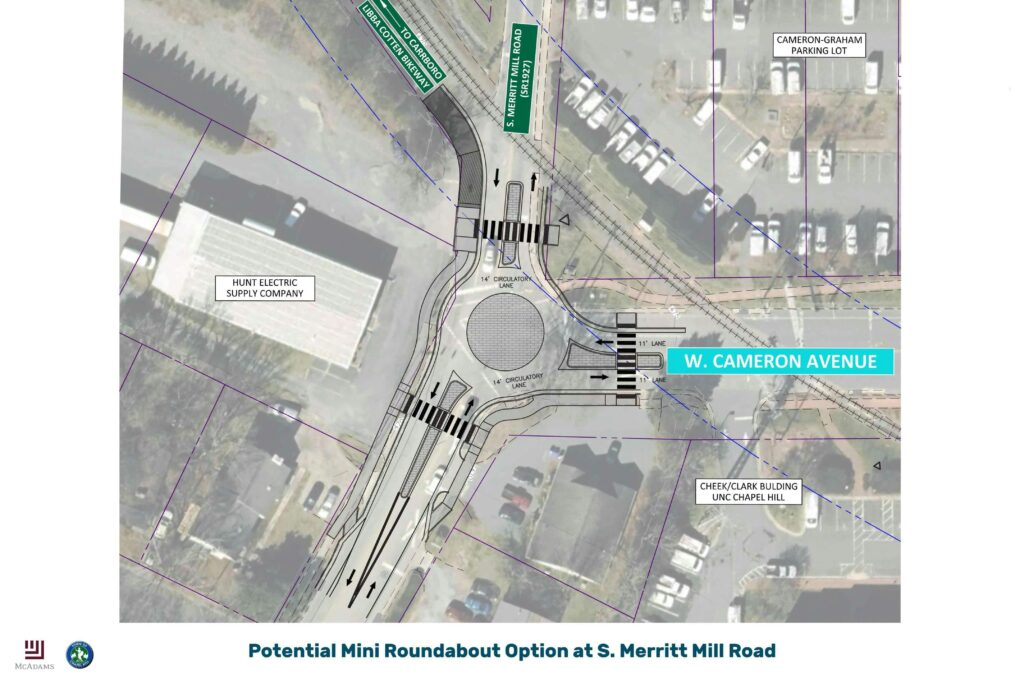
In conclusion, look over the alternatives carefully and take the survey. If you can make it, attend the drop in meeting from 6:00PM until 8:00PM at the Chapel Hill Town Hall.
I will be there and I hope to see you too!

